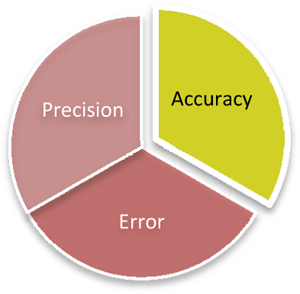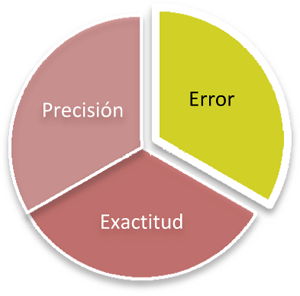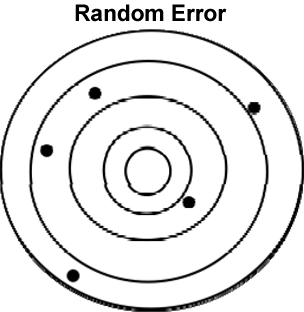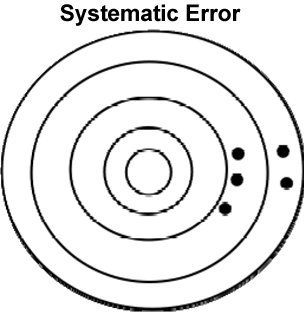Module 4: Methods of Information Collection - Section 2:2
2.2 Accuracy (i.e., Validity)
 It is also very important to make sure the information gathering methods are accurate (i.e., valid). Accuracy (i.e., validity) refers to whether or not an instrument or method truly measures what you think it measures. Researchers want accurate or valid study procedures so that study results are useful and meaningful.
It is also very important to make sure the information gathering methods are accurate (i.e., valid). Accuracy (i.e., validity) refers to whether or not an instrument or method truly measures what you think it measures. Researchers want accurate or valid study procedures so that study results are useful and meaningful.
There are many things that affect the accuracy (i.e., validity) of an instrument or method. These include the cultural appropriateness, the theoretical constructs used to develop the instrument or method, and the appropriateness of the testing method or form of the instrument for the participants' abilities (among many others).
 To demonstrate that study measures are accurate, researchers will sometimes collect different kinds of information to measure the same thing. They then look to see if all of the methods or instruments provide the same or similar conclusions. If they do, the researcher can be confident that what they have found actually represents what they intended to study.
To demonstrate that study measures are accurate, researchers will sometimes collect different kinds of information to measure the same thing. They then look to see if all of the methods or instruments provide the same or similar conclusions. If they do, the researcher can be confident that what they have found actually represents what they intended to study.
Along with lack of precision (i.e., reliability), research studies are often criticized because of the use of inaccurate methods to gather information. Measurement accuracy (i.e., validity) is essential in order to guarantee the quality and integrity of the research findings.
Definition: Accuracy (i.e., validity) refers to whether or not an instrument or method truly measures what you think it measures.
Case Example for Accuracy (i.e., Validity)
In a study involving a weight loss program, the researcher weighs participants to determine if the program is effective in helping individuals lose weight. To accurately measure weight, the scale must be working properly. To check the accuracy of the scale, a 25 pound weight is placed on a digital scale three times to make sure that a 25 pound reading is found each time.
In another study, researchers want to determine whether participants have reduced their smoking. To find out, the researcher asks the individual a series of questions on a survey about their smoking habits over the last two weeks. To verify the accuracy of the survey responses, the researcher also does a test to measure chemicals in saliva that increase with smoking.
Section 2.2: Discussion Questions
- What would happen in each of the previous examples if an accuracy check was not conducted?
- What are some other ways to check for accuracy in these studies?
2.3 Error
 When we measure something or collect information, there are many reasons that our findings might be wrong. The most obvious reason is that we could simply make a mistake in writing something down. This kind of mistake is how we might usually think about error. However, there are other kinds of errors that we might not see unless we knew to look for them. These errors are not mistakes in the sense that we have done something wrong. These types of errors can decrease the reliability or accuracy of what we do, but often because of things that we cannot control.
When we measure something or collect information, there are many reasons that our findings might be wrong. The most obvious reason is that we could simply make a mistake in writing something down. This kind of mistake is how we might usually think about error. However, there are other kinds of errors that we might not see unless we knew to look for them. These errors are not mistakes in the sense that we have done something wrong. These types of errors can decrease the reliability or accuracy of what we do, but often because of things that we cannot control.

 One of these is called Random Error. An error is considered random if the value of what is being measured sometimes goes up or sometimes goes down. A very simple example is our blood pressure. Even if someone is healthy, it is normal that their blood pressure does not remain exactly the same every time it is measured. If several measurements of blood pressure were taken over time, some would be higher and some would be lower. The reason for this random error is to be expected because of variation in normal processes in the body and in the way that the measuring device works. If error is truly random, and if we take enough measurements, then it is still possible to get a good estimate of what we are measuring. However, if random error is large, then our measurements will be unpredictable, inconsistent and they will not represent the true value of what we are measuring.
One of these is called Random Error. An error is considered random if the value of what is being measured sometimes goes up or sometimes goes down. A very simple example is our blood pressure. Even if someone is healthy, it is normal that their blood pressure does not remain exactly the same every time it is measured. If several measurements of blood pressure were taken over time, some would be higher and some would be lower. The reason for this random error is to be expected because of variation in normal processes in the body and in the way that the measuring device works. If error is truly random, and if we take enough measurements, then it is still possible to get a good estimate of what we are measuring. However, if random error is large, then our measurements will be unpredictable, inconsistent and they will not represent the true value of what we are measuring.
 The second type of error is called Systematic Error. An error is considered systematic if it consistently changes in the same direction. For example, this could happen with blood pressure measurements if, just before the measurements were to be made, something always or often caused the blood pressure to go up. Or this could happen because our device for measuring blood pressure was defective so that it always gave a result higher, or always gave a result lower, than the true value. In these cases, even if our measurements were predictable and consistent, the results would still not be accurate.
The second type of error is called Systematic Error. An error is considered systematic if it consistently changes in the same direction. For example, this could happen with blood pressure measurements if, just before the measurements were to be made, something always or often caused the blood pressure to go up. Or this could happen because our device for measuring blood pressure was defective so that it always gave a result higher, or always gave a result lower, than the true value. In these cases, even if our measurements were predictable and consistent, the results would still not be accurate.
Definition: Error in research is anything that interferes with making a confident conclusion about the study.
Case Examples for Systematic and Random Error
Systematic Error
In a study on weight loss, researchers determined at the end of the study that the scale that was used to measure participant’s weight was inaccurate. The scale added 10 pounds to the person’s actual weight every time the scale was used. Because the researcher realized that the scale consistently added ten pounds to each participant’s weight, they adjusted for this problem when analyzing the results.





